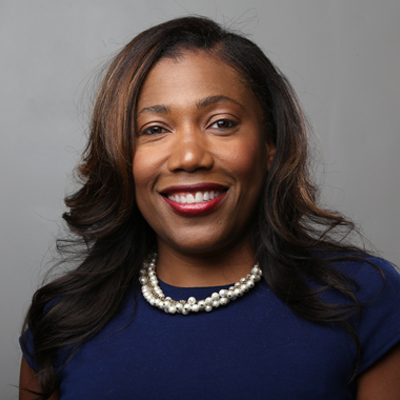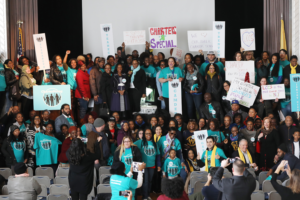Danielle West-Augustin is CEO of Queen City Academy Charter School in Plainfield, NJ. As an educator and lifelong learner, her mission is to advocate for and empower the youth under her charge.
On March 17, 2020, conversations started to swirl surrounding the school being closed for a few weeks and then reopened.
Nearly two years later, the COVID-19 pandemic is making its presence felt across our educational system. While the pandemic has had significant negative impacts on education, certain aspects have positively influenced education, accelerating long-awaited changes both nationally and on the state level.
The pandemic has had stages/ phases that are analogous to what happens when someone is cut. Stage I: The Cut; Stage 2: Cleaning the wound; Stage 3: applying the bandaid and Stage IV: the bandage comes off so healing can begin. Each stage, no matter how painful or hard, are essential to the healing process— and if given the necessary attention, can reduce the size of the scarring we’re left with as an educational structure. Our healing process is still ongoing, however, there is still promise for substantial changes and healing to our nation’s educational system.
The Cut
During phase one, teachers were running around frantically making packets grappling with the thought of effectively teaching during this unprecedented time highlighted by a global pandemic coupled with a racial reckoning. Early in the pandemic, schools balanced ensuring students were equipped to still learn while also navigating unclear and changing updates around the pandemic. Why are schools closing, and what does this mean for the state of education as we know it? How would we continue to effectively educate scholars? Schools and teachers were placed under unprecedented pressure. With this in mind, I realized there was an opportunity to break down the walls of a school building and do something that we’d never thought would be possible in the K12 traditional school space.
Cleaning the Wound
While teachers worked from home and strived to empower their classrooms, they were also grappling with the reality that lack of access made virtual instruction nearly impossible for some students. Additionally, scholars, teachers, administrators, and parents faced a steep learning curve working to navigate what seemed to be our virtual “new normal”. In response, educators were forced to reevaluate ways we could safely bring students back into the classroom setting to turn the tide on progress much loss during virtual learning. Through small student groups and breakout rooms, we were able to put ourselves on the path to improvement.
Applying the Bandaid
As schools began implementing systems and processes to make this transition as seamless as possible, many were in a position to help families stay connected while addressing any immediate concerns. As the pandemic progressed, students of color in urban areas were drowning in the digital divide. Students of color, especially Black and Latino students, make up 40 percent of the student population at Queen City Charter. However, they are disproportionately impacted by this divide and account for 54 percent of all disconnected students. Educators were plagued with scholars having no wifi or devices to attend class. However, the digital divide wasn’t the only circumstance exacerbating the role of educators. While the reality was that some families were experiencing food insecurity, schools had to be responsive and figure out how to provide full support during this time for students and their families.
It became our responsibility in education to keep health and safety at the forefront. In response, schools began to resume holding classes remotely or hybrid to lessen the spread. Although this may have kept scholars safe, it certainly impacted the scholars’ learning. The level of scholar engagement that happened in the classroom could not be replicated for the masses of scholars virtually.
However, it also exposed the need for teachers to begin to have more autonomy over the structure of their curriculum, classroom, and workday. While education historically has at times served as a community hub it certainly became an even greater presence for services during the lockdown.
Time for Healing
The final stage is really beginning! The bandage is off. While we are still dealing with the wide impact of the pandemic, we are beginning to see some progress and glimmers of hope in not just the country but in education. As new skin begins to form, a new lease on education formed as well. Throughout the pandemic, it became clear that in order for scholars to receive the most immersive and effective education, they must be in school. However, we must ensure that this new educational landscape is reflective of the lessons we’ve learned throughout the pandemic. shifting of what that means and how it looks has become different.
As schools across the country deal with staffing challenges, we see it becoming abundantly clear that teachers need flexibility. Moreso, we need teachers that are proficient in teaching pedagogy and content. Long gone are the days of doing education the same. The pandemic has allowed us to see that the engagement of scholars is best in person yet also that the tools to contribute to success for students are not equitable. The lasting impact of the pandemic will lie in how we respond to structural inequities amplified by the pandemic and how we deliver in-person instruction for scholars yet offer teachers autonomy and flexibility at some level to integrate effective and culturally conscious curriculum and classroom settings.




